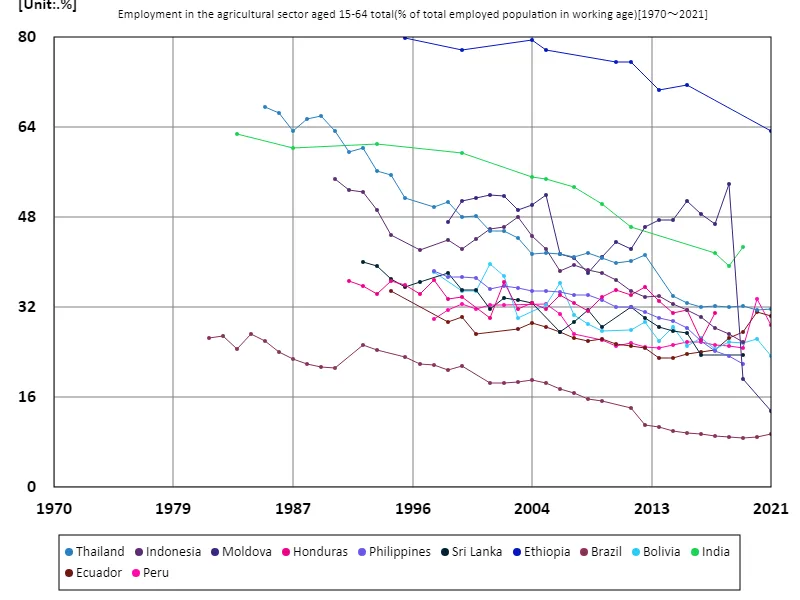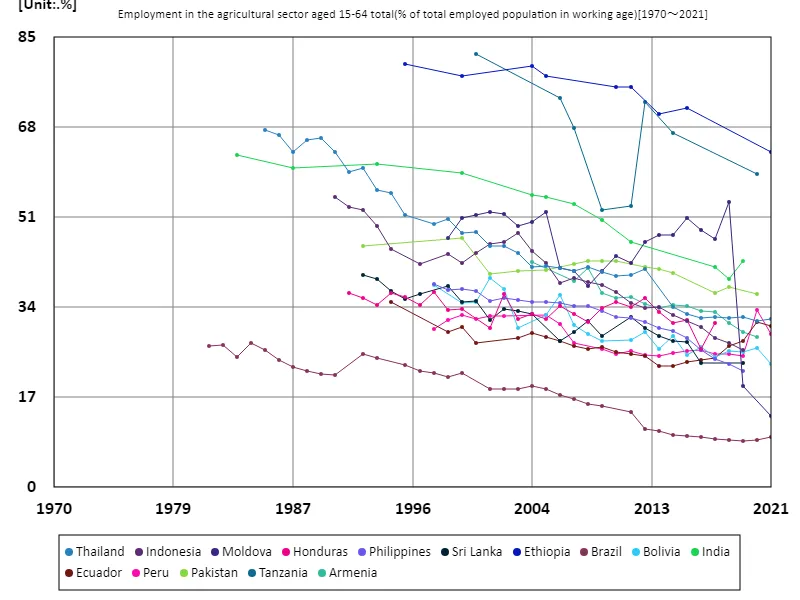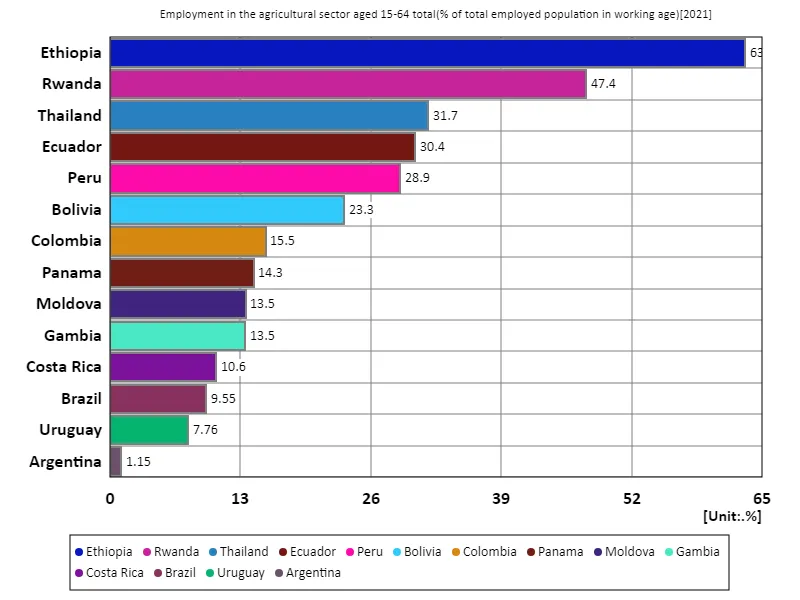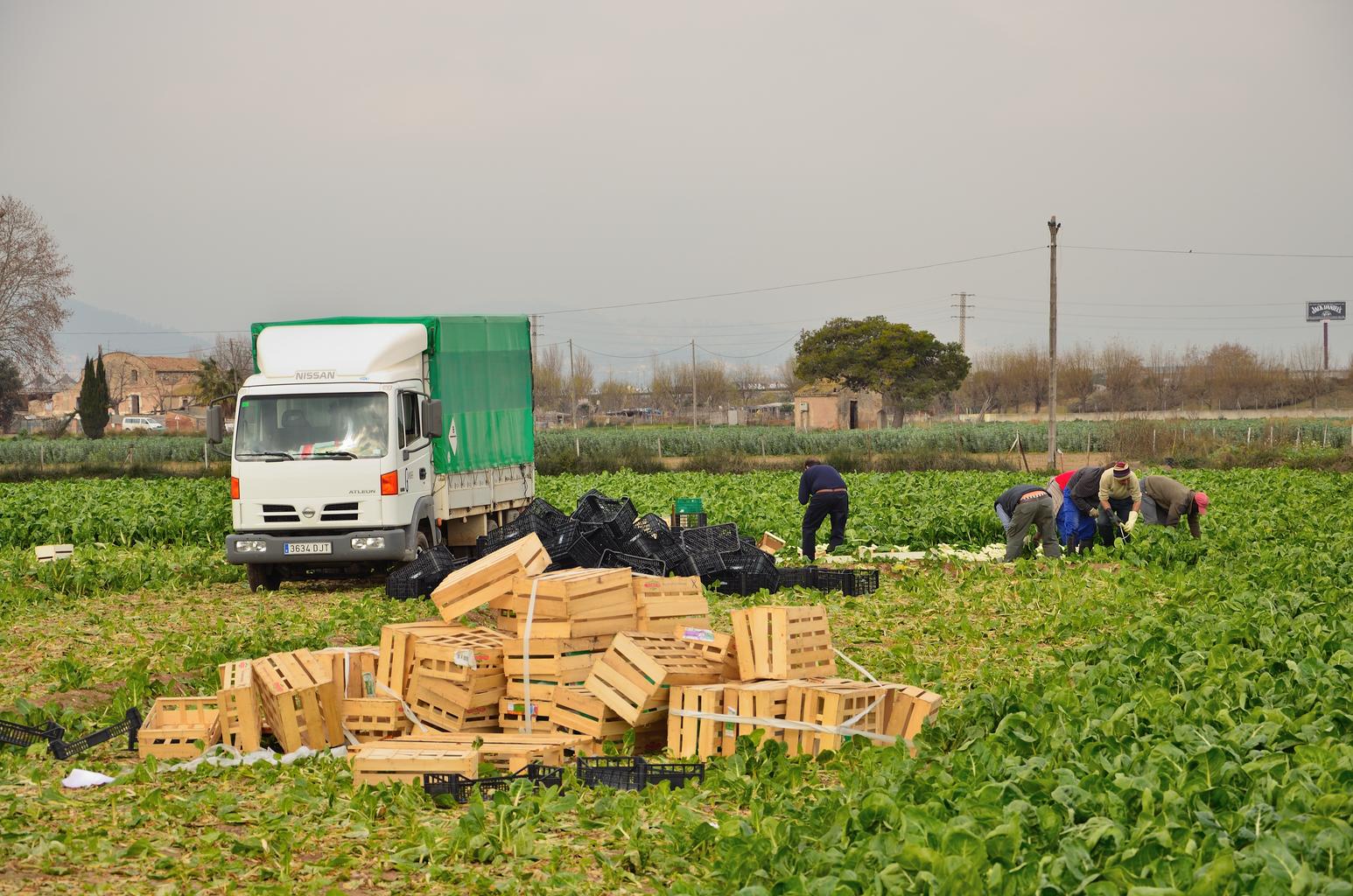- Abstract
- Employment rate in the agricultural sector for all 15-64 year olds (percentage of working-age population)
- Employment rate in the agricultural sector for all 15-64 year olds (percentage of working-age employed population) (worldwide)
- Employment rate in the agricultural sector for all 15-64 year olds (percentage of working age employed) (Worldwide, latest year)
- Reference
Abstract
The high employment rate in Ethiopia’s agricultural sector is closely related to the country’s economic structure and social characteristics. Agriculture is the foundation of Ethiopia’s economy and has long been the primary source of livelihood. As a result, employment in the agricultural sector accounts for the majority of the working age population. The trend over the past few decades has been that the proportion of people working in agriculture has remained relatively high, reflecting the slow progress of urbanization and industrialization. Furthermore, employment in the agricultural sector is driven by the goal of subsistence for many farmers, leaving little room for the development of industries other than agriculture. This high employment rate shows how dependent Ethiopia’s economy is on agriculture and will require industrial diversification in the future.
Employment rate in the agricultural sector for all 15-64 year olds (percentage of working-age population)
Between 1981 and 2021, employment in the agricultural sector in Ethiopia has shown notable fluctuations. Notably, the 79.8% recorded in 1995 reflects a period when Ethiopia’s economy was highly dependent on agriculture. Agriculture was the country’s main economic base, and most of the workforce was concentrated in the agricultural sector. This high employment rate reflects the slow pace of urbanization and industrialization, and that many people in rural areas are still engaged in agriculture. Since then, employment in Ethiopia’s agriculture sector has gradually declined, reaching 79.3% in 2021. The decline signals a shift in Ethiopia’s economy. In recent years, thanks to government efforts, the development of industries other than agriculture has been promoted, and industrialization and the expansion of the service sector have been progressing. Increased employment opportunities outside the agriculture sector, coupled with increased urbanization, have contributed to the decline in employment in the agriculture sector. Nevertheless, agriculture remains an important part of the Ethiopian economy and the majority of the population remains employed in agriculture. In the future, economic diversification and industrial development will bring further changes.


The maximum is 79.8%[1995] of Ethiopia, and the current value is about 79.3%
Employment rate in the agricultural sector for all 15-64 year olds (percentage of working-age employed population) (worldwide)
Between 1981 and 2021 data, employment in the agriculture sector in Tanzania shows notable changes. The 81.7% recorded in 2000 indicates that Tanzania’s economy was heavily dependent on agriculture at that time. This high employment rate was due to agriculture being the primary source of livelihood and the large concentration of labour in rural areas. However, over the past few decades, Tanzania’s economy has gradually changed. Increased urbanization, industrialization, and the expansion of the service sector are creating more employment opportunities outside the agricultural sector. This economic diversification has led to a decline in employment in the agricultural sector. Currently, employment in the agricultural sector stands at 72.4%, a significant decrease from its peak. This decrease is likely due to improved productivity and efficiency in agriculture, as well as an increase in jobs in urban areas. Government policies and international economic trends are also driving a shift from agriculture to other industries. Employment in the agriculture sector will continue to fluctuate as Tanzania’s economy evolves.


The maximum is 81.7%[2000] of Tanzania, and the current value is about 72.4%
Employment rate in the agricultural sector for all 15-64 year olds (percentage of working age employed) (Worldwide, latest year)
According to 2021 data, Ethiopia has the highest employment rate in the agriculture sector, at 63.3%. This high percentage indicates that Ethiopia’s economy remains heavily dependent on agriculture, reflecting the large proportion of the workforce working in the agricultural sector. In contrast, the overall average was 22.2%, indicating that while agriculture is a major part of the economy in many countries, it still has a relatively low employment rate overall. These differences are due to differences in the economic structures of each country. Agriculture is a major source of employment in developing countries, especially in rural areas. On the other hand, in developed and semi-developed countries, employment in agriculture is low and as economies diversify, employment in the service and industrial sectors is increasing. The overall employment rate of 311% indicates how widespread employment is in the agricultural sector and that differences in international economic conditions and industrial structures have a significant impact on the distribution of labor in the agricultural sector. The data provides insight into the importance of the agricultural sector and how its fluctuations relate to countries’ economic growth and industrial development.


The maximum is 63.3% of Ethiopia, the average is 22.2%, and the total is 311%



Comments